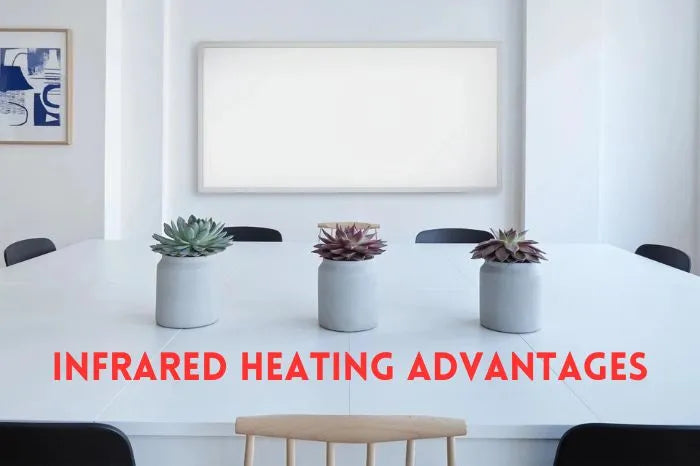Heat pumps provide heating and cooling options for homes and use the same technology as refrigerators that convert one unit of electricity into two or more units of heat. Their operation is much more complex and requires advanced technology to ensure optimal performance. However, if the conditions for installation are not properly assessed, the heat pump may underperform.
While heat pumps are an efficient heating solution, they may not provide the desired level of comfort in colder climates such as the UK. This could be due to the heat pump being incorrectly specified for the location, resulting in the oversizing of the unit and/or undersizing of the heat emitters and pipework. As a result, the overall efficiency of the heat pump is affected.
In the Times article, Lord Haughey, Member of the House of Lords of the United Kingdom quoted saying that direct electric heating systems would be more appropriate, as they are simpler to install and require less maintenance than heat pumps. (Source: InsideEcology)
Infrared heating vs heat pumps
Thermal Efficiency
Infrared heaters and heat pumps are both innovative heating technologies that operate on different principles. Infrared heaters emit infrared radiation, which directly heats objects and surfaces in their line of sight, creating a warm and comfortable environment. These heaters are efficient, as they don't rely on heating the air but instead transfer heat directly to the objects, minimizing energy loss. On the other hand, heat pumps utilize a refrigeration cycle to extract heat from the air or ground and transfer it indoors. They take some time to achieve the desired temperature due to the nature of the heat transfer process. Heat pumps experience fluctuations during repeated heating and cooling cycles. However, heat pumps become less efficient in lower temperatures.
Zonal Heating
Infrared heaters provide zonal heating where they selectively warm specific areas or zones without having to heat the entire area uniformly. This focused heat transfer allows users to target and warm particular zones, such as seating areas or workspaces, without affecting the entire room. While heat pumps are a popular choice due to the numerous government schemes in the UK to maintain overall indoor temperature, they operate by transferring heat through a central system, making zonal heating more challenging.
Installation Cost IR Heater vs Heat Pumps
The infrared heaters installation cost differs as compared to the heat pumps. Due to the differences in the technology and installation requirements, the installation cost of infrared heaters is cheaper than that of heat pumps. The simple design and function of Infrared heaters require less complex installation procedures as they don't rely on ductwork or intricate systems for heat distribution. For instance, our wall-mounted infrared heaters or ceiling-mounted infrared heaters, and their installation is a plug-and-play process, requiring minimal modifications to the existing infrastructure. On the other hand, heat pumps usually require ductwork for air distribution, and tend to involve a more elaborate installation process. The installation process requires specialized skills, and additional components, and is a more labour-intensive task that also increases the installation cost.
Low Maintenance Heating Systems
The Infrared heater requires less maintenance as they have a simple design and do not have complex mechanical systems or moving parts. This is one of the benefits of infrared heaters used in the UK. This results in fewer points of potential failure and reduces the need for regular maintenance. Unlike IR heater and electric bar heater, heat pump involves intricate systems with compressors, fans, and refrigerants, which may require periodic checks, filter replacements, and professional servicing to ensure optimal performance.
Energy Efficiency
The Infrared heaters offer targeted heating that results in minimal energy waste, as there is no loss through ducts or inefficiencies associated with heating air. In contrast, heat pumps rely on a more complex process of transferring heat from the air or ground to warm a space, which may involve additional energy consumption. In extremely cold climates, heat pumps may struggle to extract sufficient heat from the air, which affects their efficiency.
Modifications Post-installation
Infrared heaters typically operate as standalone units and any modifications such as repositioning or adding additional units to address changing heating needs can be relatively less complicated and may not require significant adjustments to the existing infrastructure. As opposed to Infrared heaters and bars, heat pumps are a combination of complex systems and altering the configuration of the system may involve adjustments to ducts, refrigerant lines, and other technical elements, requiring professional expertise.
Design and Style
Just like Kiasa’s Infrared heaters and bars, IR heaters are stylish as they come in sleek and versatile designs that blend seamlessly with various indoor and outdoor settings. Their designs include wall-mounted IR picture panels, freestanding towers, and even customizable options that resemble decorative elements. These designs prioritize aesthetics without compromising on functionality. Heat pumps, on the other hand, are bulkier and may require outdoor units, limiting their aesthetic appeal.
Having said that, Kiasa Heating Systems comes in a range of options. We offer panel heaters, heating bars, outdoor heaters, and more that can be made smart, portable, ceiling-mounted, wall-mounted, etc. as per your liking. Make the most of the advantages that our Infrared heating systems have to offer by contacting our team at 0116 488 5150 or via email at customer.support@kiasa.co.uk



